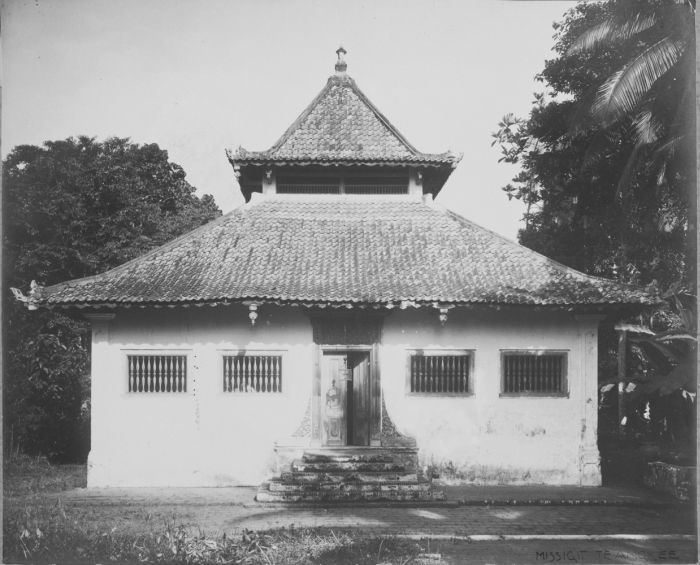Burials Prince Tubagus Angke | ||
 | ||
Address Jl. Pangeran Tubagus Angke Gg. Mesjid I, RT.1/RW.5, Angke, Tambora, Kota Jakarta Barat, DKI Jakarta 11330, Indonesia Similar Menara Matahari, Benteng Heritage Museum, Maritime Museum, Wayang Museum, Bank Mandiri Museum | ||
Lingwa s project angke mosque restoration plan
Angke Mosque, officially known as Masjid Jami Angke or Masjid Al-Anwar, is one of the oldest mosques in Jakarta, Indonesia. Well-maintained and retaining its original form, the mosque has been called by the historian Denys Lombard as 'une des plus élégantes de la vieille villa' (one of the most elegant of the old town). The history of the mosque reflects the multiethnic and multilayered origin of colonial Jakarta
Contents
History
The kampung settlement around the mosque was known as Kampung Goesti as it was settled by Balinese people under the leadership of Kapitan Goesti Ktut Badulu. By the mid-eighteenth century, this community seems to have converted from their ancestral Hinduism to Islam.
The mosque was founded on April 2, 1761. Both the main benefactor of the mosque, Nyonya Tan (née Oey), and its building contractor, Syaikh Liong Tan, were mualaf (Muslim converts) who hailed from Batavia's local Chinese community.
The mosque is located close to a canal known as Angke (Hokkian ang, "blood" and ke, carcass), so called because the stream was located close to a slaughterhouse and so it was contaminated with blood and carcasses. The area is still known as Pejagalan ("slaughterhouse").
Angke mosque has been restored several times; last restoration occurred in 1985-1987. The building is a cultural heritage protected under law.
Architecture
The architecture of the mosque follows the form of a traditional mosque of Java, apparent in its tiered roof, but various different elements - Balinese, Chinese and Dutch - are apparent throughout the house of worship.
Balinese elements are pronounced, particularly in the mosque's window shutters. The tips of its roof take the form of a Balinese punggel,which curves up like in traditional Balinese architecture. The bracketing construction of the roof follows Chinese norms. Some of the decorative elements on the roof take the form of a Chinese lotus, a symbol of Buddhist enlightenment. Dutch colonial influences are also apparent in the main door and window ornamentation of the mosque.
The mosque is of small size, 15 x 15 m, within a land of 400 sqm.
The mosque complex contains a cemetery.
